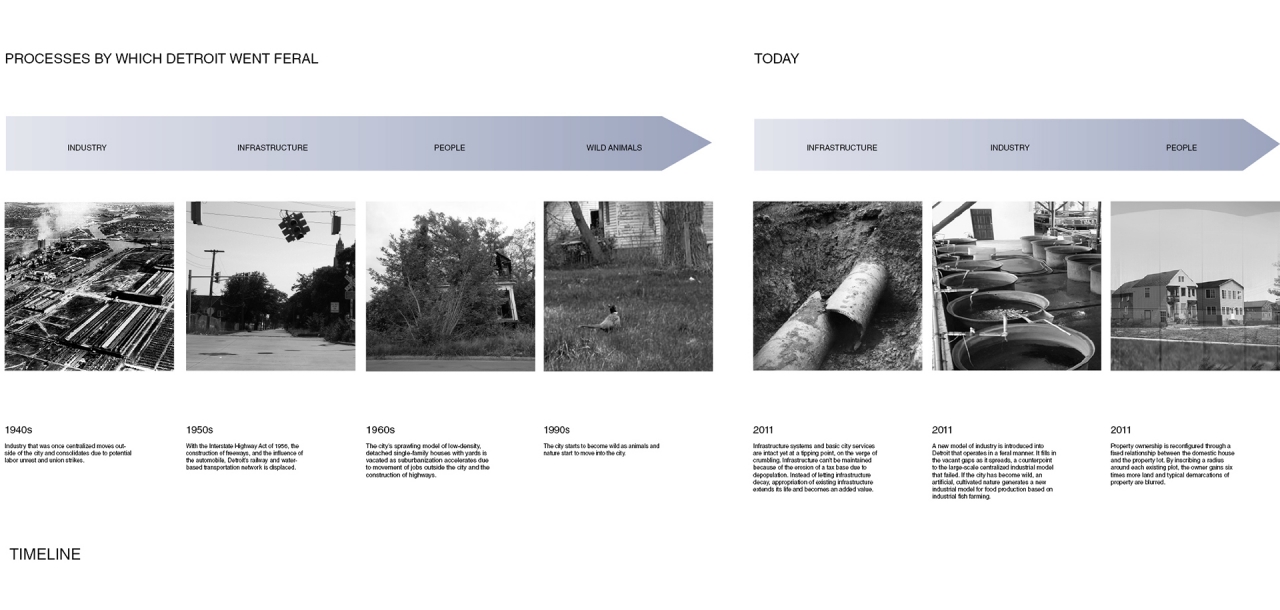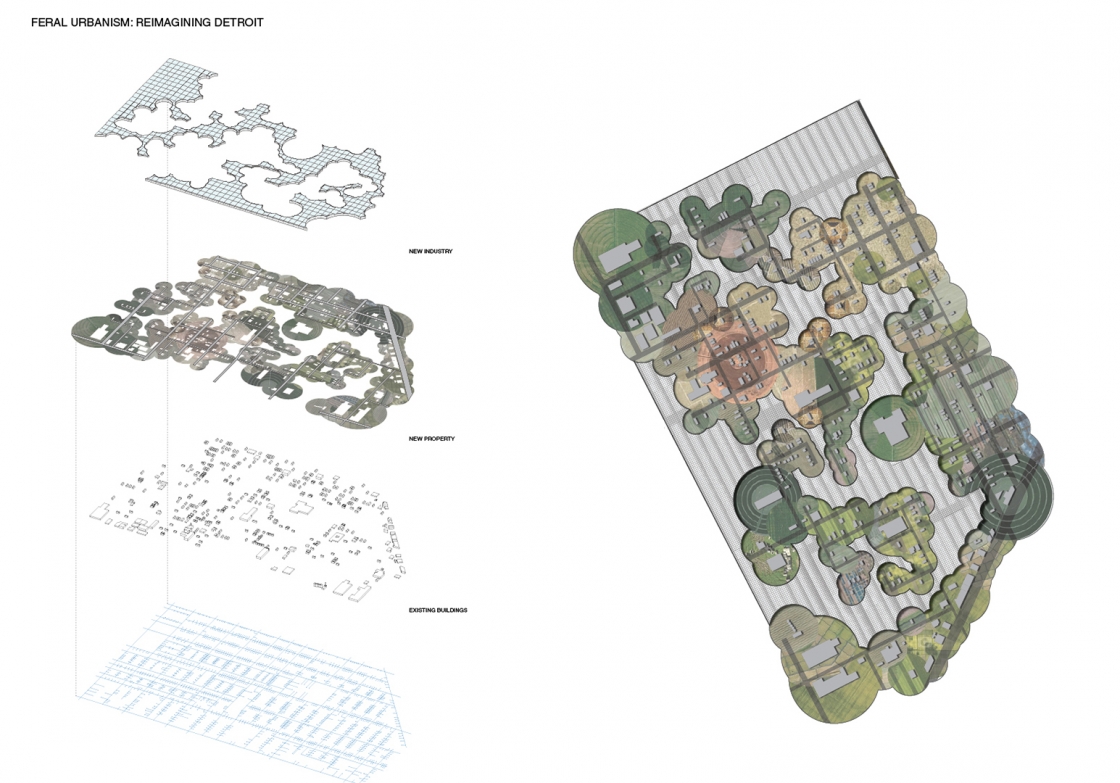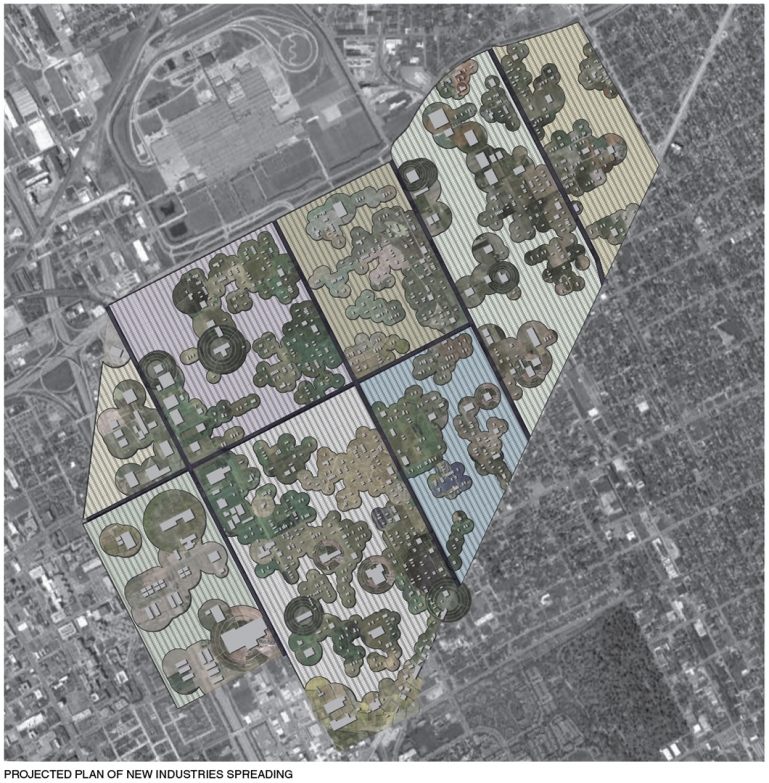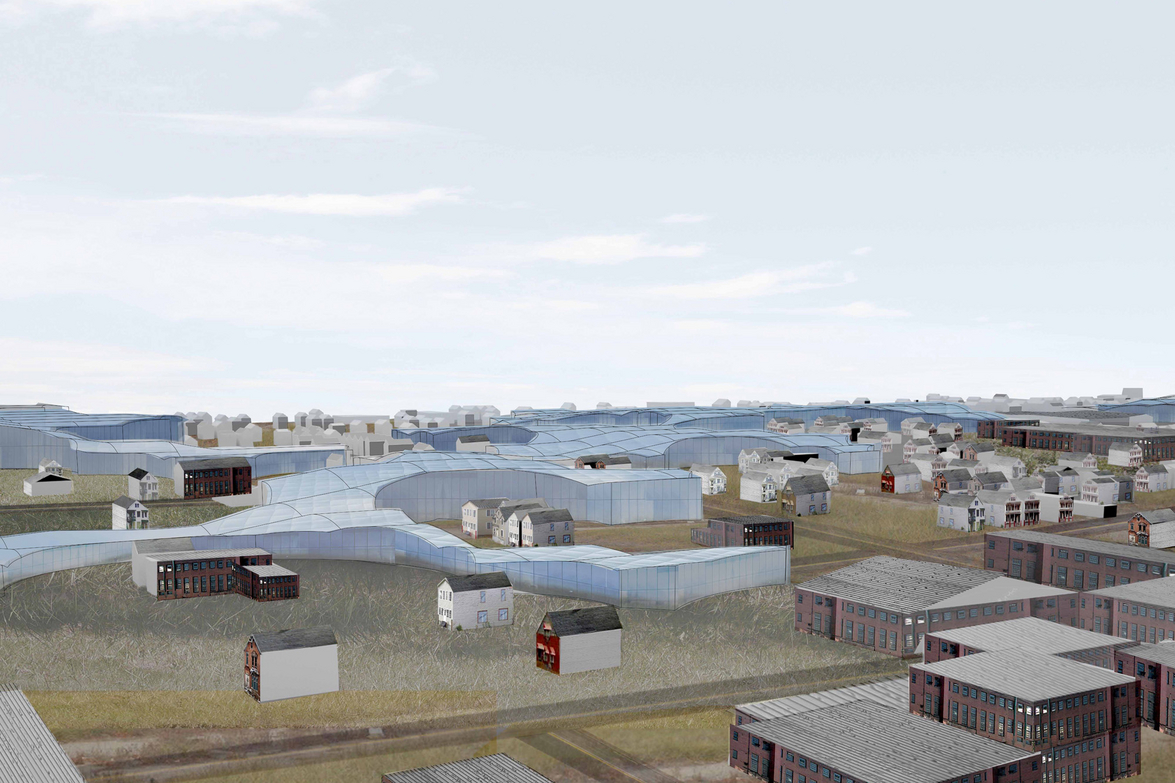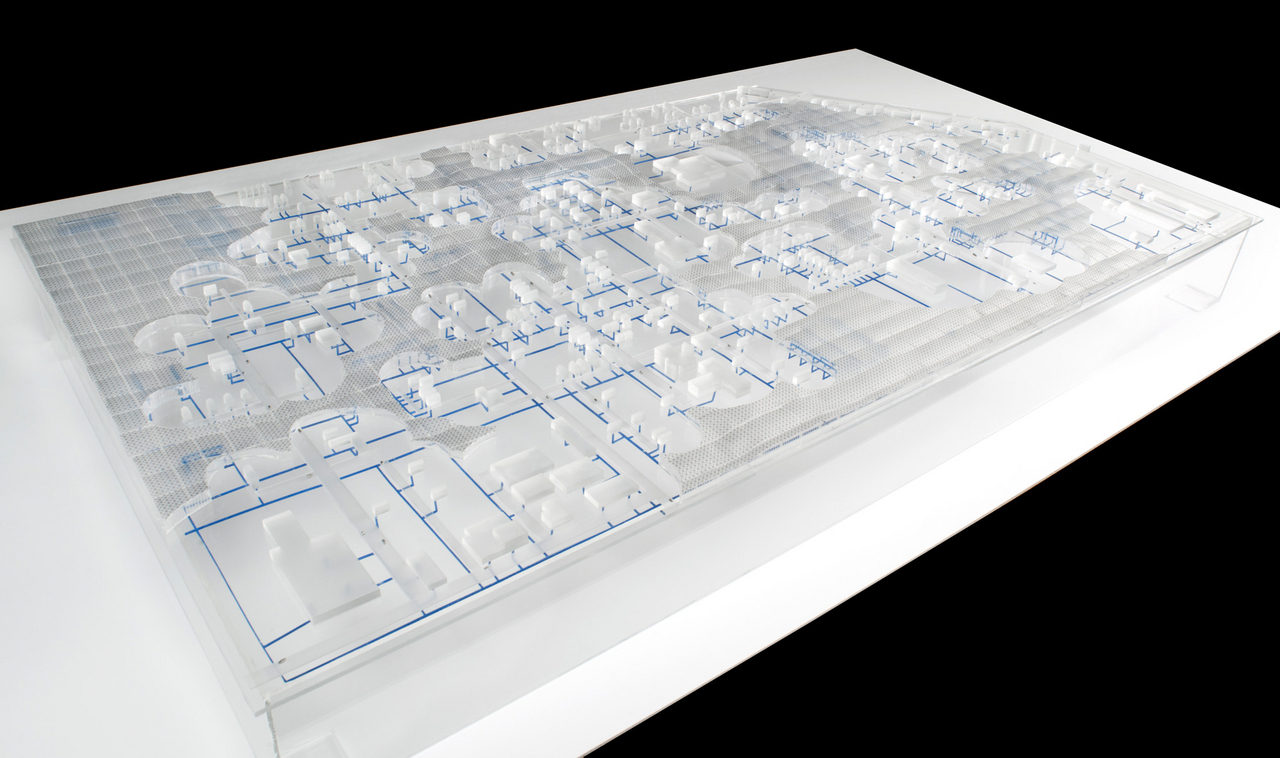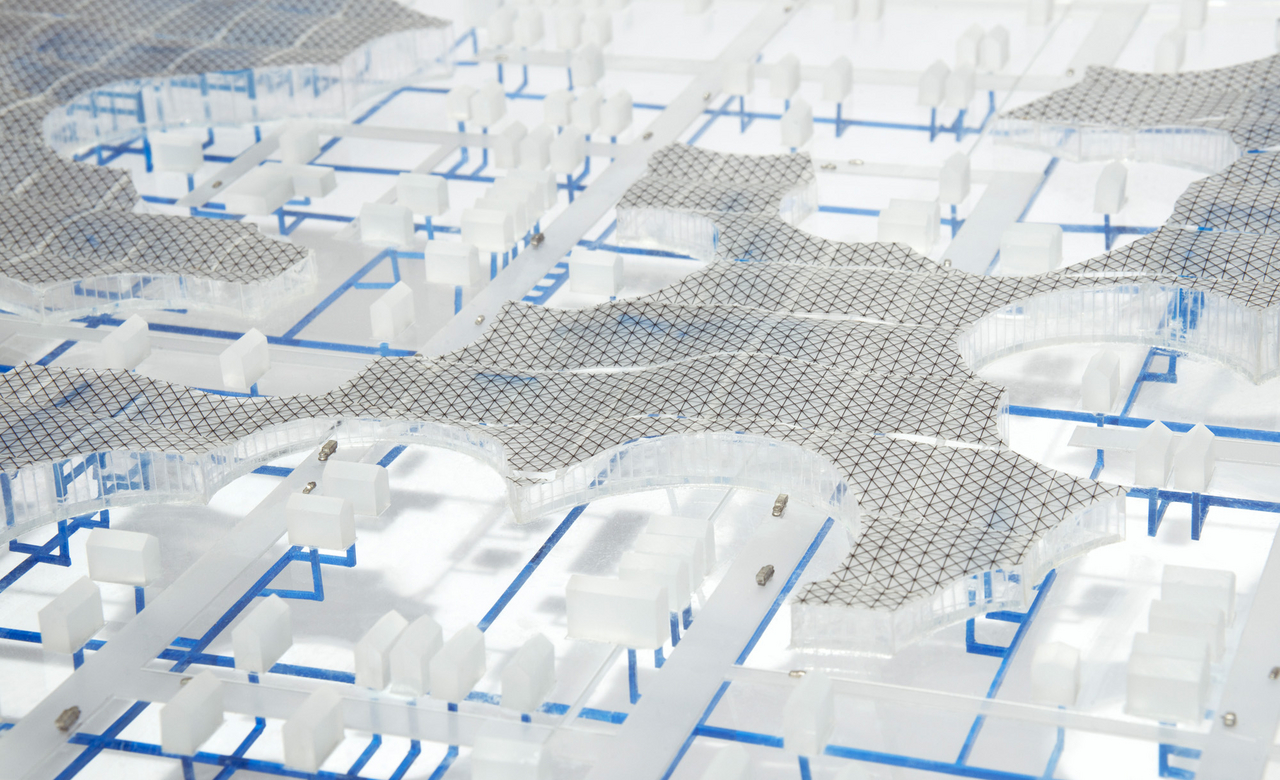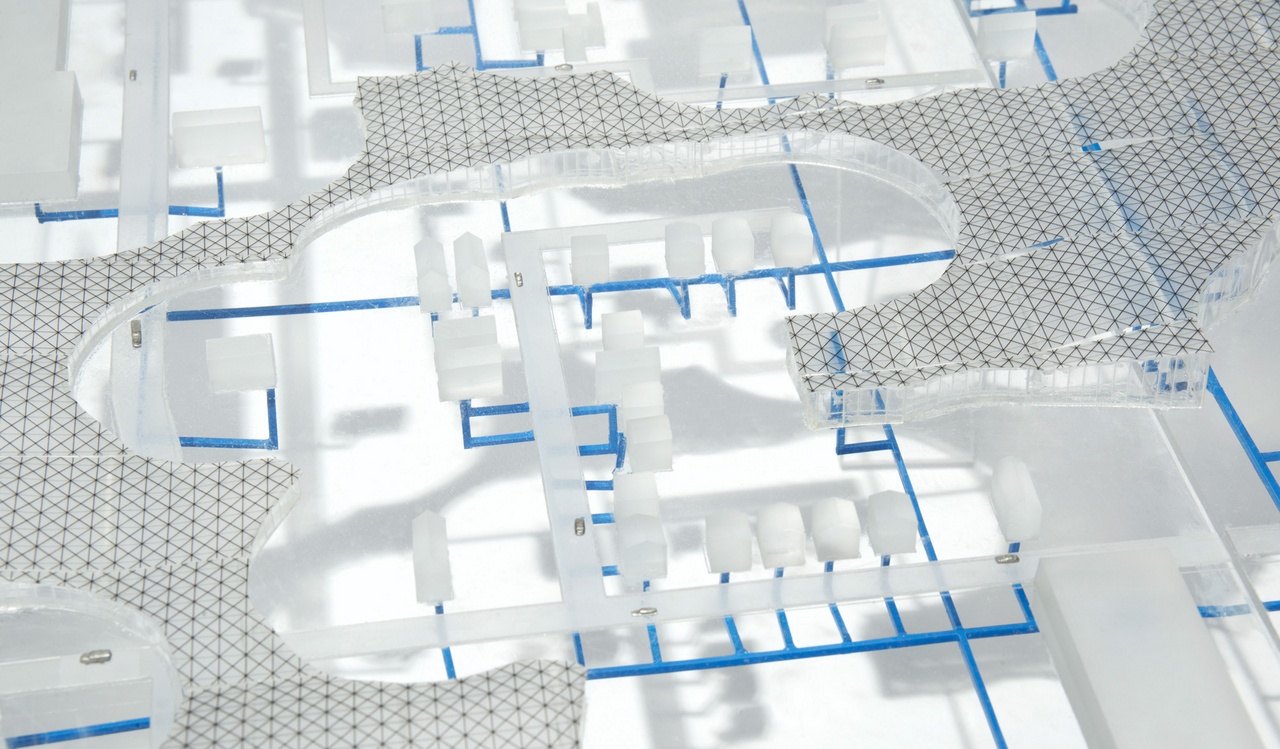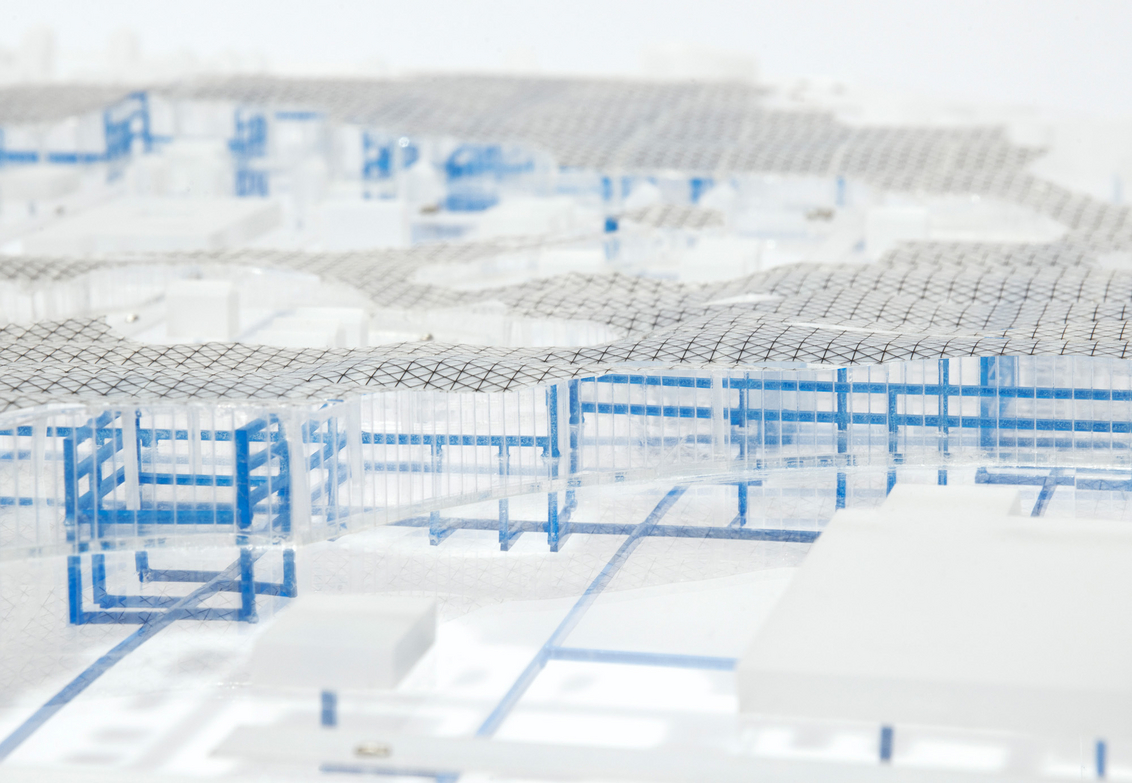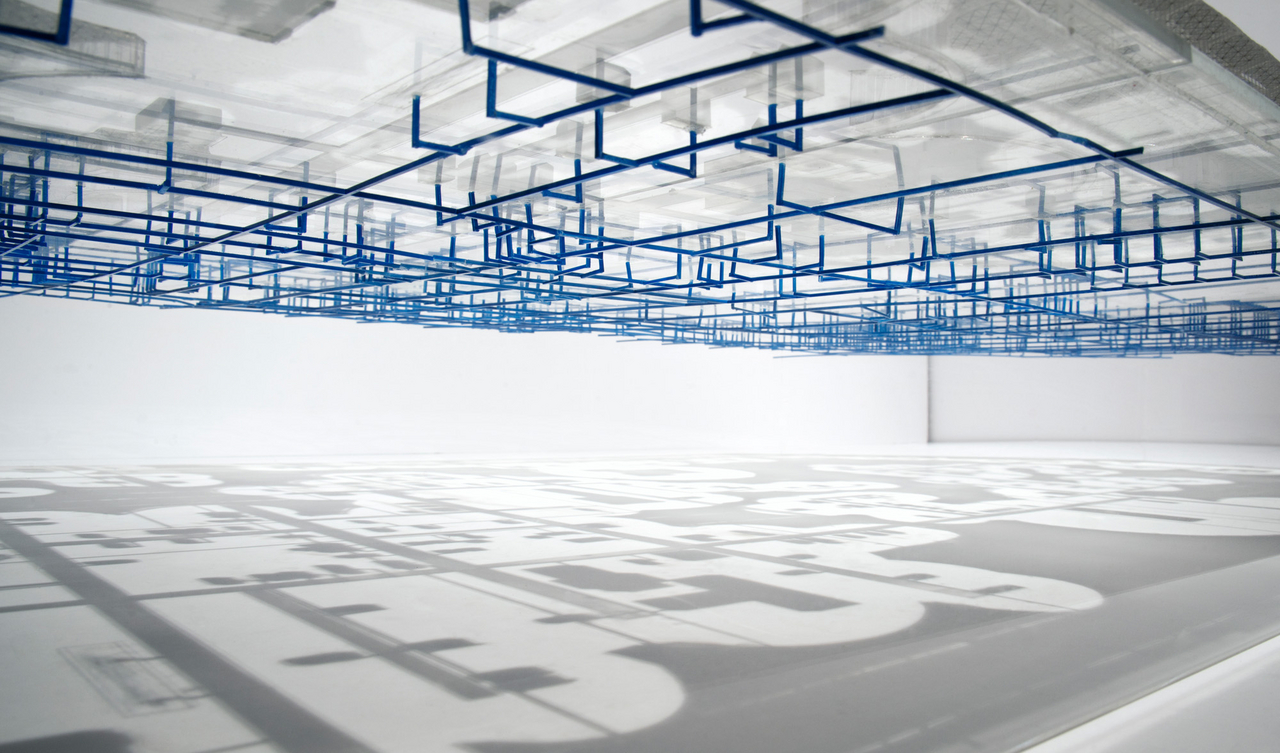Tei Carpenter
M.Arch Thesis Spring 2011
Faculty Advisors: Amale Andraos and Dan Wood
Project Title: “Feral Urbanism: Reimagining Detroit”
In the logic of urban planning, property is assumed to have value. However, when large areas of land lose value due to manmade or natural processes, traditional systems of property ownership, along with their strict lines of demarcation, lose their meaning. This condition, emblematic of decaying post-industrial American cities, opens up both a spatial and ideological void which suggests a new opportunity for urban reinvention. Detroit is a prime example of such a city, where changing economies and the failure of industry have produced massive devaluation of property and areas of total abandonment. With conventional urban development models rendered useless, a new vision for the city is needed with corresponding new concepts of property ownership, industry, and housing. Rather than simply rebuilding, this project proposes a feral urbanism that learns from the emptiness and wildness of the abandoned city.
In Detroit, there is a misalignment between perceived and actual value of property. Abandoned property is assumed to be valueless, but in fact a latent, untapped value exists in the form of the embedded infrastructure systems that were put in place during the automobile boom times when the city had twice its current population. Re-appropriating the existing (and now excess) capacity of water infrastructure, this project proposes to replace the obsolete industrial model, which was isolated from the city and predicated on mass-production, with a new model of industry in the form of food production. Low intensity, re-circulating, and sustainable aquaculture (fish farming) juxtaposes a synthetic, cultivated nature with a city that has gone wild.
The project takes a plot of 420 acres in Detroit’s East Poletown neighborhood with characteristic density and residential and industrial typologies as a testing ground for these new models. Rather than treating the site as a tabula rasa, this proposal keeps existing houses and institutions intact, seeking to build a lightweight, open and flexible intervention that could be scaled to fit multiple plots, blocks or neighborhoods. As a feral system, it can opportunistically fill in the gaps of the abandoned city, spreading gradually.
Typically, property boundaries are oriented along the street grid, yet the condition of abandoned property reveals a reconfiguration of the city where historic notions of the urban plan and the city grid have become irrelevant. The project posits a dissolution of property boundaries, instead generating a flexible relationship between the house—traditionally the core of our notion of property—and its various social and spatial entanglements, adjacencies, and demarcations. A new interpretation of property uses the house as a center point in a radial field gradated along a spectrum of individual, collective, and municipal ownership. Property thus is no longer atomized and collective plots can be used to consolidate city services such as garbage pick-up, while private plots can support a range of intensive individual uses.
This project takes the feral as a strategy that comes directly out of the site, in a structural and organizational sense, overlaying Detroit’s industrial and historical past with a new interaction between industry and community. By exploiting existing infrastructure and rethinking structures of ownership, it offers new models for housing, industry, and urban planning, and ultimately proposes a reinvention of the 21st century American city.

